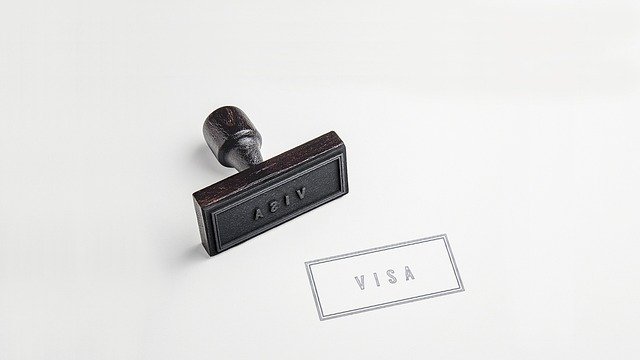Understanding Work Sponsorship Visas in the USA
A work sponsorship visa in the USA allows employers to hire foreign workers for temporary or permanent positions. Common visa types include the H-1B for skilled workers, L-1 for intra-company transfers, and O-1 for individuals with extraordinary abilities. Sponsorship requires employers to follow U.S. labor and immigration laws, including filing petitions and ensuring fair wages. This process supports both economic needs and international workforce mobility.

What are the main types of work sponsorship visas in the USA?
The United States offers several types of work sponsorship visas, each designed for specific categories of workers. The most common include:
-
H-1B Visa: This is for specialized workers in fields requiring theoretical or technical expertise, such as IT, engineering, or finance.
-
L-1 Visa: Intended for intra-company transferees, allowing multinational companies to transfer executives, managers, or specialized knowledge employees to their U.S. offices.
-
O-1 Visa: Reserved for individuals with extraordinary abilities in sciences, arts, education, business, or athletics.
-
E-2 Visa: For investors from countries with specific treaties with the USA, allowing them to work in businesses they’ve invested in substantially.
-
TN Visa: Specifically for Canadian and Mexican professionals under the USMCA (formerly NAFTA) agreement.
Understanding these visa types is crucial for both employers and potential employees to determine the most appropriate option for their situation.
What is the role of employers in the work sponsorship process?
Employers play a pivotal role in the work sponsorship process. Their responsibilities include:
-
Identifying the need for foreign workers and the appropriate visa category.
-
Initiating the petition process with U.S. Citizenship and Immigration Services (USCIS).
-
Demonstrating that the position meets the criteria for the chosen visa category.
-
Proving that the foreign worker possesses the necessary qualifications.
-
Ensuring compliance with U.S. labor laws, including offering a prevailing wage.
-
Maintaining proper documentation throughout the employment period.
The employer’s active involvement and commitment are essential for a successful work sponsorship application.
How does the petition process work for work sponsorship visas?
The petition process for work sponsorship visas typically involves several steps:
-
Labor Certification: For some visas, like the H-1B, employers must first obtain a labor certification from the Department of Labor, verifying that hiring a foreign worker will not adversely affect U.S. workers.
-
Filing the Petition: The employer files Form I-129 (Petition for a Nonimmigrant Worker) with USCIS, along with supporting documentation.
-
USCIS Review: USCIS reviews the petition, which may include requests for additional evidence.
-
Approval: If approved, USCIS sends a notice to the employer.
-
Visa Application: The foreign worker then applies for the visa at a U.S. embassy or consulate in their home country.
-
Interview and Issuance: The worker attends a visa interview, and if approved, the visa is issued.
This process can take several months, depending on the visa type and current processing times.
What are the eligibility criteria for work sponsorship visas?
Eligibility criteria vary depending on the specific visa type, but common requirements include:
-
Job Offer: A valid job offer from a U.S. employer willing to sponsor the visa.
-
Qualifications: Relevant education, skills, and experience for the position.
-
Employer Eligibility: The sponsoring company must meet specific requirements, such as financial stability.
-
Visa-Specific Criteria: For example, the H-1B requires a bachelor’s degree or equivalent, while the O-1 demands proof of extraordinary ability.
-
Intent to Return: For most temporary visas, applicants must demonstrate the intent to return to their home country after the visa expires.
-
Clean Background: No criminal record or immigration violations that would make the applicant inadmissible to the U.S.
Meeting these criteria is crucial for a successful visa application.
What unique challenges exist in obtaining work authorization in the USA?
Obtaining work authorization in the USA comes with several unique challenges:
-
Visa Caps: Some visas, like the H-1B, have annual numerical limits, making the process competitive.
-
Processing Times: Long wait times for visa processing can delay start dates for employment.
-
Changing Regulations: Immigration policies can change, affecting eligibility and processes.
-
Employer Dependence: Most work visas tie the employee to a specific employer, limiting job mobility.
-
Renewal and Extension Complexities: Navigating the renewal process and maintaining status can be challenging.
Understanding these challenges helps both employers and employees prepare for the complexities of the work sponsorship process.
How do work sponsorship visas impact long-term career prospects in the USA?
Work sponsorship visas can significantly impact long-term career prospects in the USA:
-
Path to Permanent Residency: Some visas, like the H-1B, can be a stepping stone to a green card.
-
Skill Development: Working in the U.S. often provides exposure to cutting-edge technologies and practices.
-
Networking Opportunities: Building professional networks in the U.S. can open doors to future opportunities.
-
Career Advancement: Experience gained can lead to promotions or better job prospects.
-
Visa Transitions: Understanding different visa options allows for strategic career planning.
-
Cultural Adaptation: Long-term stays facilitate better cultural integration, benefiting both personal and professional life.
While work sponsorship visas offer valuable opportunities, it’s important to understand their limitations and plan accordingly for long-term career goals in the United States.
Work sponsorship visas in the USA offer a pathway for skilled international professionals to contribute to the American workforce. While the process can be complex and challenging, understanding the various visa types, employer responsibilities, and eligibility criteria is crucial for both companies and individuals seeking to navigate this system successfully. As global talent mobility continues to be a key factor in the modern economy, these visas play a vital role in fostering innovation and economic growth in the United States.




